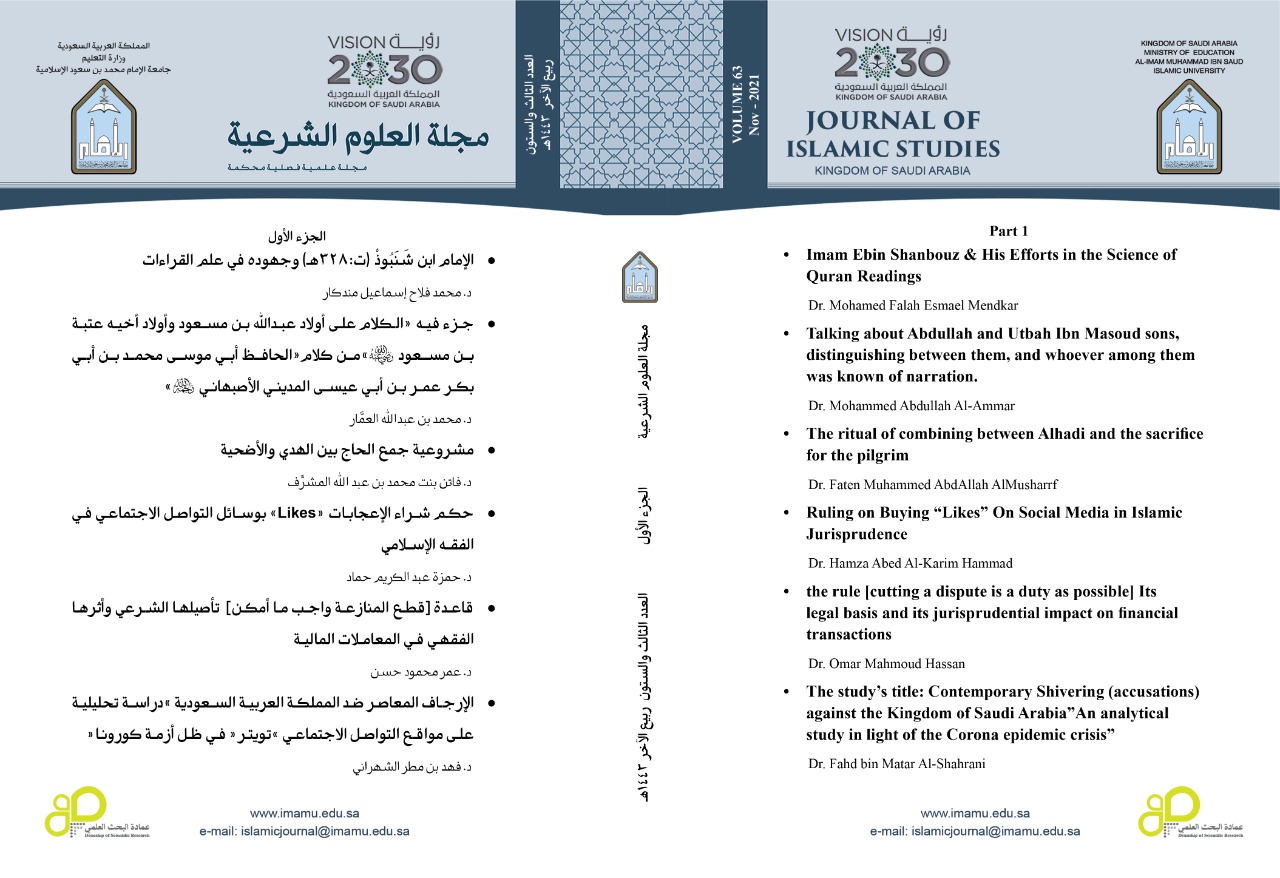The ritual of combining between Alhadi and the sacrifice for the pilgrim
Keywords:
sacrifice ، direction ، pilgrimAbstract
Alhadi is one of the apparent rituals of Islam, and it is (what is given to the Haram by cattle beasts as an approach to God at a specific time in a specific way). The book, the Sunnah and consensus indicate its legitimacy.
The types of Hajj are three: (Tamattu ', Qiran, and Efrad). The Hadi is obligatory for the Tamattu' and the Qiraan, under the condition of not being living in Makkah, the Hadi required:
- That it be from a cattle beast. It is at least five year old of camels, two year old of cows, or a one year old of sheep, or a more than six months of age for lamb and not less than that, and that it is free of defects that might decrease the meat, and that it is slaughtered on time during the days of slaughter.
The sacrifice is different from the Hadi in the ruling, the place of slaughter, staping the hadi in the hump and attaching a sign on the Hadi. The feeding, and what the sacrificer avoids in the first 10 days of Tu alhjah month if he wants to sacrifice
The jurists differed regarding the legitimacy of the pilgrim’s combination of the Hadi and the sacrifice on three sayings: to say that it is lawful to combine them, to say that the pilgrim in Mina does not combine them, to say that the traveler does not sacrifice. It is more correct to say legitimacy with a statement that it is preferable in this time to sacrifice in the pilgrim country by proxy. So that, the meat does not stack in Makkah or not reach those who deserve it, or it is transported as the sacrifice is transferred to the countries of the Islamic world. From the poor and the needy.




